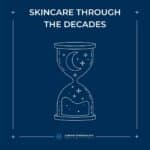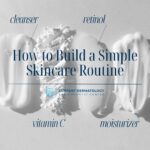
“Bags” under the eyes are a common cosmetic concern that can affect individuals of all ages.
While often associated with fatigue and lack of sleep, the reality is that under-eye bags can be
attributed to three main factors: decreased collagen, increased vascularity, and
hyperpigmentation. In this article, we’ll delve into the science behind each cause and explore
effective treatment options for achieving a refreshed and revitalized under-eye appearance.
Decreased Collagen
Collagen, the structural protein responsible for skin elasticity and firmness, plays a pivotal role
in maintaining the youthful appearance of the under-eye area. As we age, however, the
production of collagen naturally decreases, leading to thinning and sagging skin.
Treatment Options:
- Topical Collagen-Boosting Products: Incorporate skincare products that contain retinol to
stimulate collagen production and improve skin elasticity.
- Tixel: Tixel is a non-ablative skin rejuvenation device that uses controlled heat to stimulate collagen production.
- Radiofrequency microneedling: RF microneedling combines the benefits of traditional
microneedling with the added advantage of radiofrequency energy. When applied to the
delicate area around the eyes, RF microneedling can effectively address concerns such as fine lines, wrinkles, and laxity.
- Ablative lasers: When applied around the eyes, ablative lasers work by removing layers of skin in a controlled manner, prompting the body to initiate a healing response that includes the production of new collagen.

Increased Vascularity
Visible blood vessels contribute to the appearance of under-eye bags, creating a bluish or
purplish tint. Factors like genetics, allergies, and lifestyle choices can increase vascularity in this
area, and it becomes more apparent as the skin becomes thinner.
Treatment Options:
- Anti-Inflammatory Skincare: Use creams or serums with anti-inflammatory ingredients like caffeine or arnica to reduce puffiness and improve circulation.
- Laser Therapy: Laser treatments can target blood vessels, minimizing their visibility and
improving the overall appearance of under-eye bags.
- Platelet rich fibrin: Platelet-Rich Fibrin (PRF) is a regenerative therapy that utilizes the patient’s own blood components to promote tissue healing and regeneration.
Hyperpigmentation
Hyperpigmentation, characterized by the darkening of the skin, is another contributor to under-
eye bags. Genetics, sun exposure, and inflammation can all play a role in the development of
this concern.
Treatment Options:
- Topical Brightening Agents: Incorporate skincare products containing ingredients like vitamin C, niacinamide, and kojic acid to address hyperpigmentation and even out skin tone.
- Chemical Peels: Chemical peels can help exfoliate the skin, reducing hyperpigmentation and promoting a more even complexion.
Combating under-eye bags involves understanding the interplay of decreased collagen,
increased vascularity, and hyperpigmentation. While there is no one-size-fits-all solution, a
combination of preventive measures and targeted treatments can significantly improve the
appearance of under-eye bags.
It’s essential to approach treatment with a holistic perspective considering lifestyle changes,
skincare routines, and professional interventions. A consultation with one of our board-certified
dermatologists can provide personalized recommendations tailored to your specific concerns
and help you achieve a refreshed and revitalized under-eye appearance. Remember, a well-
informed approach to under-eye care goes beyond mere aesthetics—it’s about embracing self-
care and feeling confident in your own skin.
Disclaimer: The views and opinions expressed on Annapolis Moms Media and its affiliates are those of the authors and/or experts and do not necessarily reflect the official policy or position of Annapolis Moms Media. Any content provided by our bloggers or authors is of their opinion and is not intended to malign any religion, ethnic group, club, organization, company, individual, or anyone or anything.
The published article is available for informational purposes only and is not considered licensed professional advice on any subject matter. By viewing articles/blog posts, the reader understands there is no client relationship between the reader, the publisher, and its authors. The article/blog should not be used as a substitute for professional advice from a licensed professional, and readers are urged to consult their own counsel on any specific questions concerning a specific situation.






 Cinderella at Center Stage Is a Fairytale For Everyone
Cinderella at Center Stage Is a Fairytale For Everyone